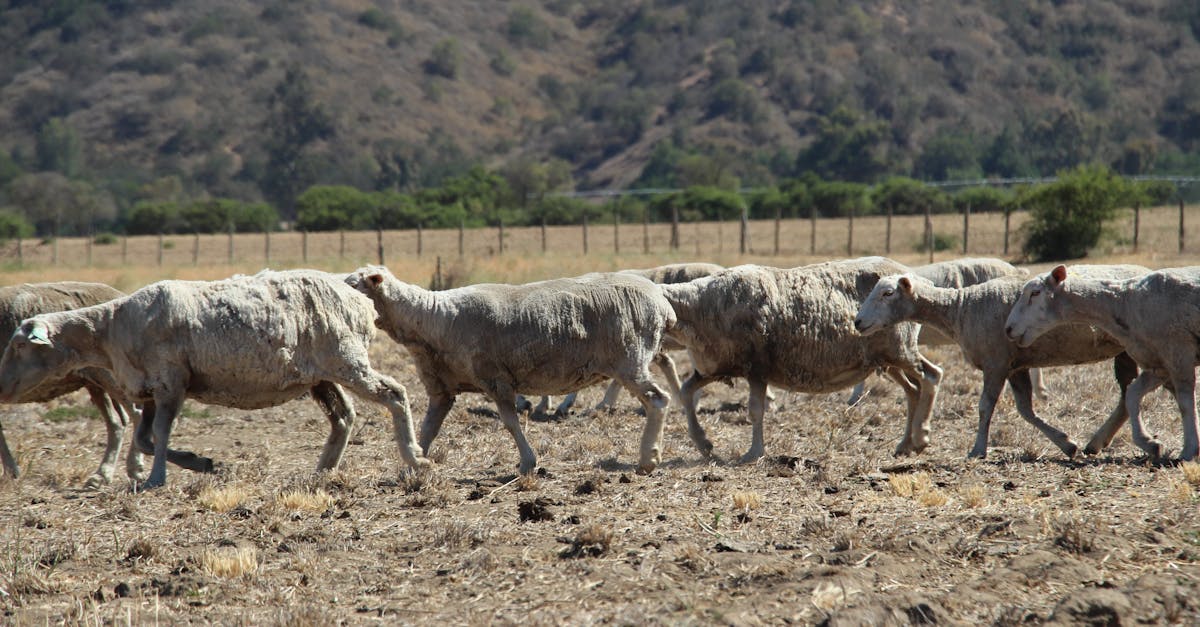7 Steps to Elevate Your Farming with AI Agriculture
You know, farming has taken quite the modern twist with AI agriculture, making our fields smarter than ever. Imagine a world where your crops can call for help like a superhero if they face any trouble. From drones that keep an eye on your plants to robots that work tirelessly, technology is opening up amazing possibilities for farmers. And while it might sound like a sci-fi movie, this development is crucial for feeding our growing population without overusing resources or land.
Now, before you start thinking this is just a high-tech dream, let’s talk about how these intelligent systems can transform your daily farming grind. Autonomous equipment can handle the manual labor while AI-driven solutions offer precise insights, like weather forecasts and soil health analysis. With these tools, you can increase productivity and take some well-deserved breaks without the risk of losing your crop yield. It’s like having a helping hand that never gets tired!
If you’re curious about how to start this tech-savvy journey and make your farm high-tech, read on to discover 7 steps that can elevate your farming game to new heights!

Photo provided by Nikola Tomašić on Pexels
In the article
- Understanding AI agriculture
- Integrating Autonomous Farming Systems
- AI Crop Management Techniques
- Preparing for the Future of Farming
Understanding AI Agriculture
What is AI Agriculture?
AI agriculture, often referred to as AI in farming, is transforming how we produce food by enhancing productivity and sustainability. Imagine using smart systems that can predict the right time to plant crops, which areas of the field need more water, or even when to expect pests. These innovations are helping us tackle some of the biggest challenges in agriculture, such as labor shortages and climate change. By analyzing large amounts of data, AI agriculture tools help farmers make informed decisions that lead to better crop yields and healthier soils.
One of the most exciting aspects of AI in farming is its ability to optimize resources. This means farmers can use water, fertilizers, and pesticides more efficiently, which reduces waste and improves environmental outcomes. Moreover, AI agriculture helps mitigate risks by providing insights into potential threats like weather changes or disease outbreaks. By integrating AI technologies, farmers can improve their operations and ensure they get the most out of their resources, ultimately boosting profitability and sustainability.
Importance of AI Agriculture
The world population is expected to reach 10 billion by 2050, which greatly increases the demand for food production. This is where AI agriculture plays a crucial role. By boosting yields through precise and data-driven approaches, it helps meet the growing global food demand while addressing challenges like limited land availability and climate change. Imagine a future where AI-powered systems continuously monitor crops, assessing conditions like soil moisture or nutrient levels, and provide real-time recommendations.
AI agriculture not only helps increase crop yields but also enhances food quality by ensuring that plants get exactly what they need to thrive. By integrating AI into agriculture, we can improve the productivity of farming practices while minimizing environmental impact. This approach fosters a sustainable future for agriculture, making it possible to feed a growing population without depleting resources. Overall, AI agriculture is not just a tool; it is a vital part of the solution to global food security challenges.
Challenges in AI Agriculture
While the benefits of AI agriculture are substantial, there are also challenges that hinder its progress. High costs and adoption reluctance are two major barriers. The initial investment in AI technologies can be prohibitive for smallholder farmers, who may lack the financial resources or technical expertise needed to implement these solutions effectively. Additionally, there is often resistance to change, with traditional farmers hesitant to adopt new technologies they are unfamiliar with.
Another significant challenge is the need for robust technical infrastructure and collaboration with technology providers. Successful implementation of AI agriculture requires not only cutting-edge tools but also a strong network to support their integration and maintenance. Overcoming these barriers is essential to fully realize the potential of AI agriculture and ensure its widespread adoption. By addressing these challenges, we can pave the way for a more efficient and sustainable agricultural sector that benefits farmers globally.

Integrating Autonomous Farming Systems
One of the most innovative advancements in AI agriculture is the development of autonomous farming systems. These systems revolutionize the way farms operate by enhancing efficiency and reducing the need for manual labor. Autonomous tractors, for example, can plow, plant, and harvest crops with minimal human intervention, allowing farmers to focus on other crucial aspects of their business.
Robotic Agriculture Tools
Robotic agriculture tools are at the forefront of this transformation, offering solutions that streamline various farming processes. For instance, robots can assist in planting seeds, removing weeds, and even harvesting crops, reducing workload and improving productivity. These tools often use sophisticated sensors to evaluate environmental conditions, ensuring that each task is performed with precision and care. By implementing robotic agriculture technologies, farms can significantly enhance their operational capabilities and improve their overall efficiency.
Additionally, these robotic tools help increase accuracy in farming practices, allowing farmers to achieve better results with fewer resources. By minimizing human error and optimizing processes, robotic agriculture contributes to sustainable farming practices, which benefit not only farmers but also the environment. Embracing these technologies empowers farmers to adapt to modern challenges and maintain competitive operations in a rapidly changing agricultural landscape.
Precision Agriculture Benefits
Precision agriculture is another key aspect of AI in farming, offering numerous benefits that help optimize resource usage and reduce waste. This approach utilizes data-driven insights to manage crops and their surrounding environment more effectively. By implementing precision agriculture techniques, farmers can monitor soil health, crop development, and weather conditions in real time, ensuring the best possible outcomes for their fields.
One of the most significant advantages of precision agriculture is its ability to target specific areas that require intervention, whether it be additional nutrients, water, or pest control measures. This targeted approach minimizes the use of inputs and maximizes yield potential, ultimately contributing to a more sustainable and environmentally friendly agricultural system. By embracing precision agriculture, farmers can achieve greater efficiency and profitability, while also protecting natural resources for future generations.
Smart Farming Technology
Smart farming technology leverages the power of real-time data to aid in decision-making and improve farm operations. Smart farming incorporates IoT devices and sensors that gather critical information about crop conditions, helping farmers make informed choices about how to manage their fields. This technology not only increases efficiency but also enables farmers to respond quickly to challenges like pests, diseases, or adverse weather conditions.
The integration of smart farming technology into agricultural practices offers a wealth of opportunities for enhancing productivity and sustainability. By utilizing this technology, farmers can better understand their crops’ needs, leading to more precise interventions and improved outcomes. With smart farming solutions, we can expect a more resilient agricultural system capable of meeting the demands of a growing global population while preserving the environment for future generations.

Photo provided by Abbey Fodor on Pexels
AI Crop Management Techniques
AI crop management techniques offer valuable insights into optimizing crop health and yield. By analyzing data gathered from various sources, AI systems can identify potential issues and suggest actions to enhance crop performance. These techniques are crucial for maintaining healthy crops and maximizing productivity, ensuring that farmers achieve their desired results.
AI Pest Control Solutions
AI pest control solutions are revolutionizing the way farmers deal with crop threats. By using advanced algorithms and computer vision technology, AI systems detect pests early, reducing damage and minimizing the need for chemical interventions. This approach not only protects crops but also promotes a healthier environment by reducing pesticide usage.
The implementation of AI pest control solutions offers a proactive approach to managing crop threats, helping farmers maintain high-quality produce without compromising environmental sustainability. By providing accurate and timely information, these solutions enable farmers to make informed decisions that benefit both their crops and the ecosystem as a whole. Adopting AI pest control measures creates a more resilient agricultural system capable of meeting the challenges of modern farming.
Drone Agriculture Applications
Drone agriculture applications have become an integral part of AI farming solutions, offering new ways to monitor fields and collect valuable data. By utilizing drones, farmers can gather detailed aerial images of their crops, providing them with a comprehensive overview of their fields’ health and development. This information allows for better decision-making and more targeted interventions.
Drones play a significant role in improving efficiency and productivity on farms by reducing the need for manual labor and providing real-time insights. This technology enables farmers to assess crop conditions, identify problem areas, and take corrective actions swiftly, ensuring that they maintain optimal productivity levels. As drone agriculture continues to evolve, it offers even more possibilities for enhancing farm operations and addressing the challenges faced by modern agriculture.
AI Farming Solutions Implementation
Implementing AI farming solutions involves tailoring these technologies to meet the unique needs of each farm. By customizing AI tools and strategies, farmers can optimize their operations and achieve better results. This process may include installing sensors, setting up data systems, and training staff to use new technologies effectively.
The successful implementation of AI farming solutions requires collaboration between farmers, technology providers, and other stakeholders. By working together, they can develop systems that enhance efficiency and sustainability while addressing specific challenges faced by individual farms. Embracing AI farming solutions allows farmers to remain competitive in a rapidly evolving agricultural landscape and secure their place in the future of farming.
Agricultural Robotics for Efficiency
Agricultural robotics play a vital role in enhancing efficiency and streamlining repetitive farm tasks. These robots can perform various functions, such as planting, harvesting, and sorting produce, reducing the need for manual labor and speeding up processes. By automating these tasks, agricultural robotics free up valuable time and resources for farmers.
As these technologies continue to advance, they offer even more possibilities for improving agricultural practices. By implementing agricultural robotics, farmers can scale their operations efficiently while maintaining quality and consistency. This innovation not only benefits individual farms but also contributes to the overall sustainability and success of the agriculture industry, ensuring a brighter future for everyone involved.

Photo provided by Michał Robak on Pexels
Preparing for the Future of Farming
Preparing for the future of farming involves adapting to new technologies and embracing innovative approaches that drive efficiency, productivity, and sustainability. As AI agriculture continues to evolve, farmers must be ready to leverage these advancements and integrate them into their operations.
Overcoming Adoption Barriers
Overcoming adoption barriers is crucial for the widespread implementation of AI agriculture. Training and support for farmers are key to easing the transition and ensuring they have the skills and knowledge needed to succeed. By providing education and resources, we can help farmers develop the confidence to adopt these technologies and fully realize their benefits.
Addressing concerns such as high upfront costs and lack of practical experience is essential for encouraging adoption. By working with technology providers and offering financial assistance, we can make AI agriculture more accessible to all farmers. This approach fosters a more inclusive and resilient agricultural sector, capable of meeting current and future challenges effectively.
Long-term Goals for AI Agriculture
Long-term goals for AI agriculture focus on sustainability and food security, ensuring that the agricultural sector can continue to thrive despite the challenges of a changing world. By integrating AI technologies into farming practices, we can increase efficiency, optimize resource use, and enhance productivity, ultimately contributing to a more sustainable global food system.
Embracing AI agriculture also involves developing solutions tailored to specific environmental and social contexts, addressing local needs while considering global trends. By doing so, we can create a more equitable and efficient agricultural system that benefits both farmers and the communities they serve. Through strategic planning and collaboration, AI agriculture can play a pivotal role in securing a brighter future for everyone reliant on our planet’s resources.
Step Into the Future of Farming
Embracing modern technology in farming can seem daunting at first, but the undeniable benefits make it worthwhile. By integrating advanced solutions, you can reduce labor costs, improve environmental impact, and maximize crop yields. These technologies are designed to address real challenges like climate change, soil health, and labor shortages. Imagine having tools at your fingertips that optimize watering systems, predict weather changes, and monitor crop conditions in real-time. With these advances, farming becomes not only more efficient but also sustainable for future generations.
To truly benefit from these innovations, it’s essential to take actionable steps today. Start by exploring cost-effective solutions tailored to your farm’s specific needs, whether it’s using drones for monitoring or investing in precision irrigation systems. Collaborating with technology providers can offer insights and help you develop a robust infrastructure. By adopting these practices, you’ll be well-prepared to tackle future challenges and enhance both productivity and sustainability on your farm.
I encourage you to share your experiences and stories with fellow farmers. Sharing knowledge not only strengthens our community but also inspires others to embrace change. If you haven’t yet, consider engaging with local agricultural groups or online forums to stay updated on the latest technological developments. Together, we can ensure that farming remains a thriving and sustainable industry for years to come. Let’s take these steps together and see the remarkable difference it makes in our agricultural practices.







